Categories: Repair of household appliances, Electric motors and their application
Number of views: 45816
Comments on the article: 0
Household electric motors and their use
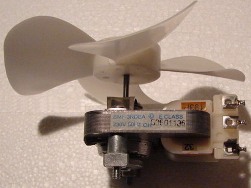 Thanks to global electrification, our life has become more comfortable and cozy. The life of a modern person is impossible to imagine without electrical appliances. A lot of household appliances, which are entirely powered by electricity, are used today in every home. Even rural life is replete with various devices that make the economy more progressive and less burdensome for its owner.
Thanks to global electrification, our life has become more comfortable and cozy. The life of a modern person is impossible to imagine without electrical appliances. A lot of household appliances, which are entirely powered by electricity, are used today in every home. Even rural life is replete with various devices that make the economy more progressive and less burdensome for its owner.
In this article we will touch on the topic of household electric motors that faithfully serve in our vacuum cleaners, in washing machines, in coffee grinders, in food processors, in microwave ovens, and in many other household appliances, using which we don’t even think about how they are arranged, and how important the role of the electric motor is in them.
Household electric motors are not industrial units for many kilowatts, they are often the result of engineering thought to optimize seemingly common principles in order to minimize flaws, and at the same time increase efficiency, as applied to a specific device. It is necessary that the engine is compact, if possible not noisy, and does not consume too much electricity, while accurately fulfilling the functions assigned to the household appliance.
Let's start with the kitchen. Each kitchen has a microwave. Some kitchens have a food processor, and a coffee grinder, and even a dishwasher. Consider the engines of these devices.
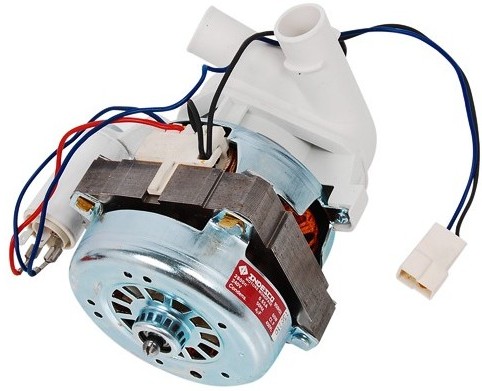
The recirculation pump of the dishwasher, designed to pump water into the washing showers of the machine, has as a drive a small squirrel cage single-phase asynchronous motor. The rotor speed is approximately 2800 rpm, and its power can be different - from 60 to 180 watts usually, depending on the capacity of the dishwasher.
The motor winding is equipped in parallel with a working capacitor, the typical capacity of which is 3 microfarads. This engine perfectly copes with its task - it rotates the impeller of the pump, pumps water.
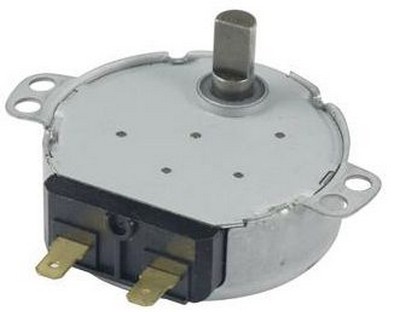
There are two motors in the microwave. The first of these rotates the turntable. It needs sick power and low revs, so this engine is synchronous, and although it is single-phase, it has a gear reducer. As a rotor, there is a round permanent magnet that rotates at a speed of up to 3000 rpm, but the gearbox reduces the rpm to 2.5 - 6 rpm, which are transmitted to the table.
The power of this small washer-shaped motor is from 2.5 to 5 watts, and the supply voltage can be 21, 30 or 220 volts, depending on the model of the microwave. With its task - to rotate the table with heavy dishes - this gear motor copes with a bang.
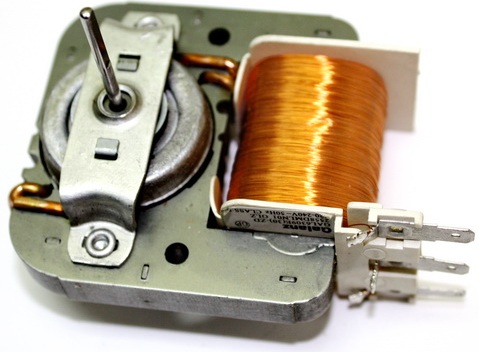
There is also a magnetron cooling fan in the microwave. This fan is driven by a single-phase asynchronous motor with a power of 10 to 50 watts, the rotor speed of which is 1200 - 1300 rpm. The stator of the engine is drawn from plates of electrical steel, the rotor is just a steel cylinder with a pressed shaft.
The working winding is made of a thin enamel wire, and is located on a plastic frame, worn on the stator. There is also a starting winding, the role of which is performed by short-circuited single turns of large cross section located at the edges of the stator, and forming a starting moment when turned on.
The motor does not differ in high efficiency, but copes with its function - to rotate the fan, to drive air through the magnetron radiator.
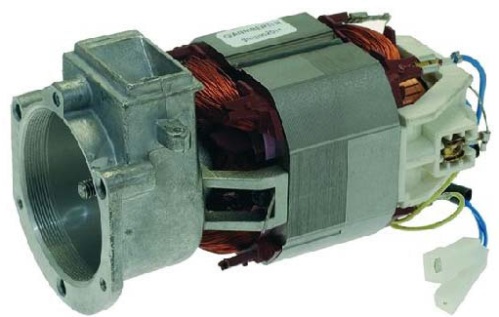
In coffee grinders, single-phase collector motors are used. Such motors have windings both on the stator and on the rotor.Through the collector-brush assembly, power is supplied to the rotor windings, and the rotation speed of the coffee grinder blades is huge.
Motors of typical home coffee grinders are powered by alternating current, and have a capacity of up to 180 watts. They develop revolutions significantly exceeding 3000 per minute, and can reach 20,000 or more revolutions per minute, this is a feature of collector motors.
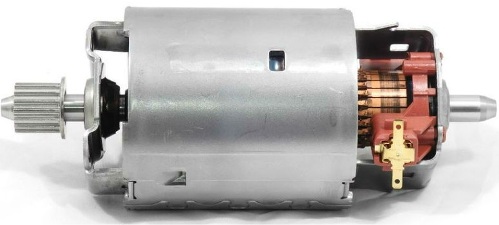
The food processor is also equipped with a single-phase commutator motorHowever, more powerful than in coffee grinders. The engine power of the food processor can reach kilowatts, and the revolutions here are regulated by thyristor control circuitsaccording to a principle like dimmers - dimmers.
The advantage of a collector motor, as applied to a food processor, is high torque and high maximum revolutions, since the motor is neither synchronous nor conventional asynchronous, its speed does not depend much on frequency, but more on average current.
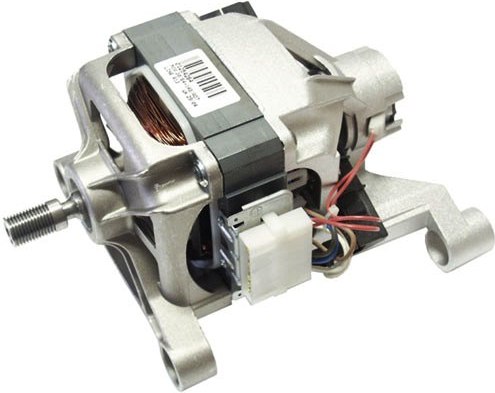
Now move to the bathroom. Here, of course, is an automatic washing machine. From the very beginning, they used collector motors with thyristor speed control. Such an engine is equipped with a tachometer, which allows the electronics to accurately set the rotation speed of the drum of the washing machine at any load level.
The small pulley on the motor shaft is much smaller in diameter than the rotor, and at revolutions reaching 10,000 per minute, 1000 revolutions per minute are transmitted to the drum through the belt, and the power can lie in the range from 200 to 800 watts.

More modern washing machines use direct drive motors, brushless asynchronous motors. An external rotor with 12 permanent magnets is used as a rotor, and an internal 36-coil stator as a stator. The coils are combined into three groups of 12 pieces, and they allow implementing three-phase frequency control of the drum rotation speed (frequency up to 300 hertz) by means of an electronic BLDC controller, and power (torque) by means of PWM regulation.
These motors are asynchronous, and are controlled by a BLDC inverter, where a constant voltage in the region of 325 volts is supplied by pulses in series to three groups of stator coils. The speed reaches 1500 revolutions per minute, and the power in the region of 1300 watts.
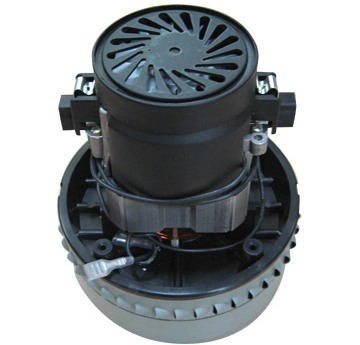
Next, of course, remember the vacuum cleaner. Motors for vacuum cleaners were always always collector. Here, and revolutions up to 10,000 per minute, and power up to 2 kilowatts. Such motors are loud because of the design features of the turbine, which is driven into rotation.
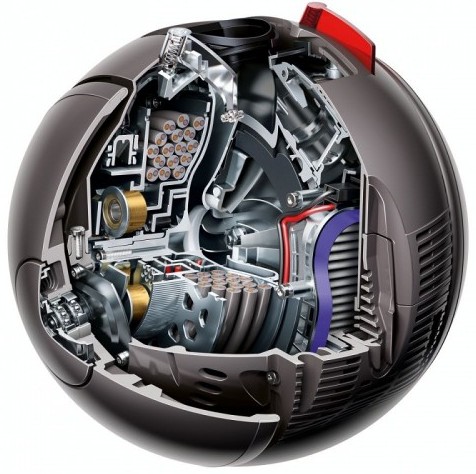
The most advanced vacuum cleaners with pulsed magnetic motors, where permanent neodymium magnets are located on the rotor, reach 100,000 rpm due to, again, BLDC - pulse control technology. Such motors are a real miracle of engineering. The motor is integrated into the suction and filtration system, the power during operation reaches 1300 watts, that is, such a motor in a vacuum cleaner works more efficiently than a collector one.
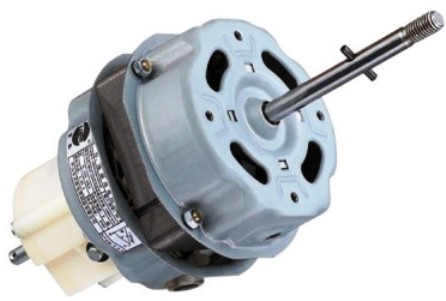
Indoor three-speed fans operate on single-phase asynchronous AC motors with a power of 60 watts. These motors have four windings on the stator, connected in series with each other and with a capacitor of 1.2 microfarads, although the motor is single-phase. The windings connected together in series in a closed stator circuit, when switched, are combined into two parallel circuits in three different combinations, so three different fan speeds are available.
So, we examined ten household electric motors from the most common appliances in everyday life. Of course, these are not all engines, there are also a variety of hair dryers, spool removers, razors, looms, drills, screwdrivers, humidifiers (from the first), aquarium pumps, sewing machines, printers, and much more.If you list all the engines, ten pages is not enough.
We hope that this short review was useful for you, and now you know which electric motors work in your household appliances, which you use every day, and maybe you did not even suspect that everything was arranged there like that.
See also at i.electricianexp.com
:
